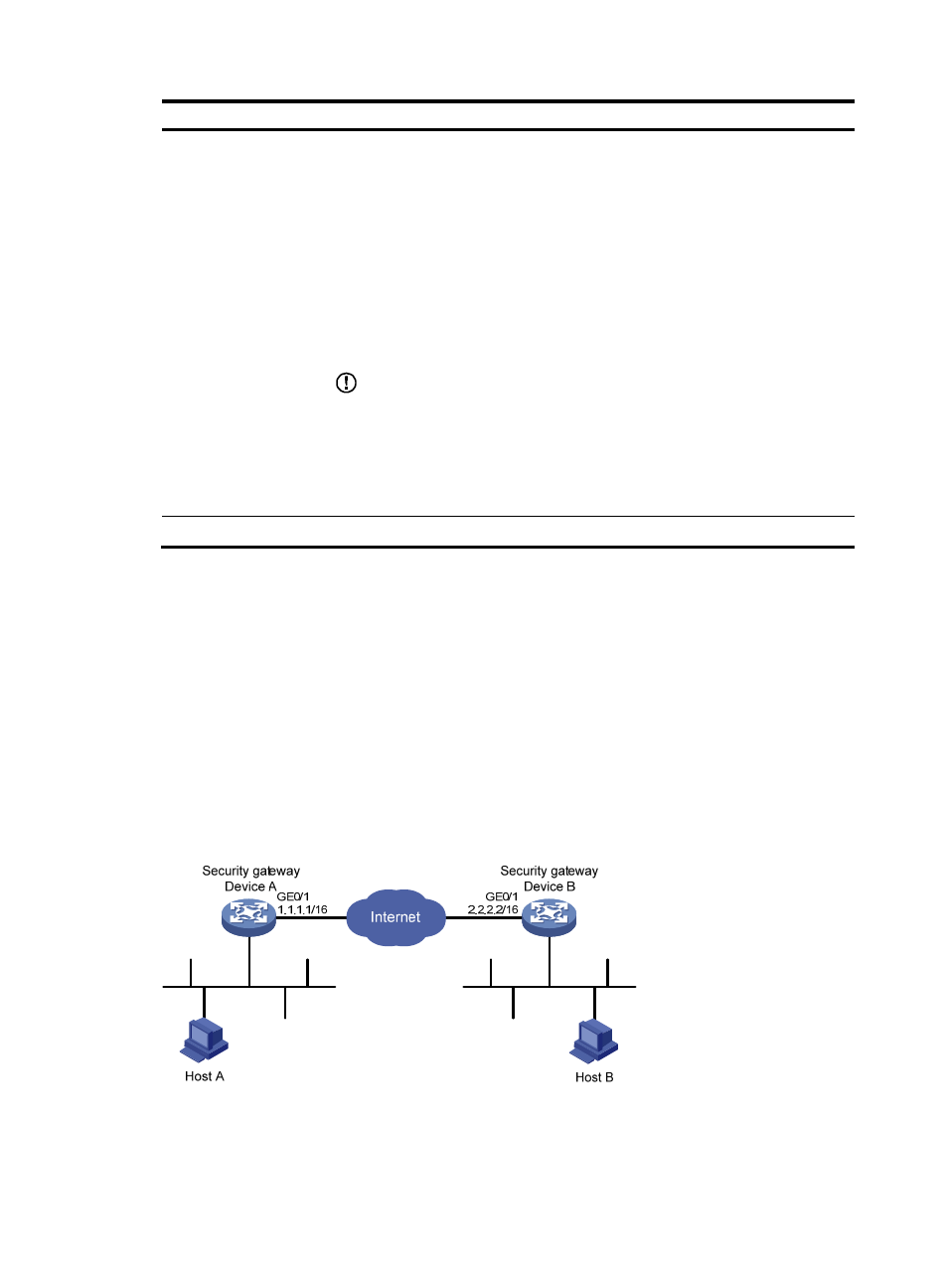Ike configuration example in the web interface, Network requirements – H3C Technologies H3C SecPath F1000-E User Manual
Page 144

132
Field
Description
Flag
Status of the SA. Possible values include:
•
RD (ready)—Indicates that the SA has already been established and is ready for
use.
•
ST (stayalive)—Indicates that the local end is the tunnel negotiation initiator.
•
RL (replaced)—Indicates that the tunnel has been replaced and will be cleared
soon.
•
FD (fading)—Indicates that the soft lifetime expires but the tunnel is still in use. The
tunnel will be deleted when the hard lifetime expires.
•
TO (timeout)—Indicates the SA has received no keepalive packets after the last
keepalive timeout. If no keepalive packets are received before the next keepalive
timeout, the SA will be deleted.
IMPORTANT:
IKE maintains the link status of an ISAKMP SA by keepalive packets. Generally, if the
peer is configured with the keepalive timeout, you must configure the keepalive packet
transmission interval on the local end. If the peer receives no keepalive packet during
the timeout interval, the ISAKMP SA will be tagged with the TIMEOUT tag (if it does not
have the tag), or be deleted along with the IPsec SAs it negotiated (when it has the tag
already).
Domain of Interpretation Interpretation domain to which the SA belongs.
IKE configuration example in the Web interface
In this example, either Device A or Device B is the SecPath firewall.
Network requirements
As shown in
, configure an IPsec tunnel that uses IKE negotiation between the security gateways
Device A and Device B to allow secure communication between Host A and Host B.
For Device A, configure an IKE proposal that uses the sequence number 10 and the authentication
algorithm MD5. Leave Device B with only the default IKE proposal. Configure the two devices to use the
pre-shared key authentication method.
Figure 90 Network diagram
- H3C SecPath F5000-A5 Firewall H3C SecPath F1000-A-EI H3C SecPath F1000-E-SI H3C SecPath F1000-S-AI H3C SecPath F5000-S Firewall H3C SecPath F5000-C Firewall H3C SecPath F100-C-SI H3C SecPath F1000-C-SI H3C SecPath F100-A-SI H3C SecBlade FW Cards H3C SecBlade FW Enhanced Cards H3C SecPath U200-A U200-M U200-S H3C SecPath U200-CA U200-CM U200-CS
